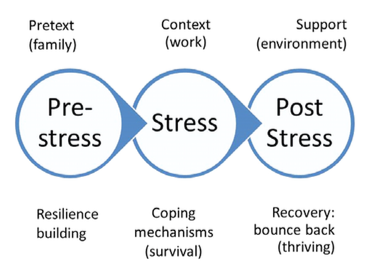
Work-life balance is important for our clients to achieve because the “life” part of the equation is the support environment for the “work” part. To get better performance at work, our clients need to enhance the environment they are coming from in order to cope with the stress they will face at work. Getting this right reduces stress leave, sick leave, turnover and the costs associated with a person leaving work.
There are different kinds of stress – some are good, some are neutral and some are bad for us if experienced in the long term. When focusing in on work-life balance we also need to keep in mind that stress might be coming from home, work or after work.
Research shows that work is a leading cause of stress for adults. (Consider that 65 percent of respondents to the American Psychological Association’s 2012 “Stress in America” survey cited work as a significant source of stress in their daily lives.) As coaches, however, we know that our clients’ performance and resilience in the workplace are strongly influenced by the goings-on in their non-work lives. It may be helpful to visualize your client’s day as divided into three segments: pre-text, context and recovery. Each of these segments has an impact on the other two.


















